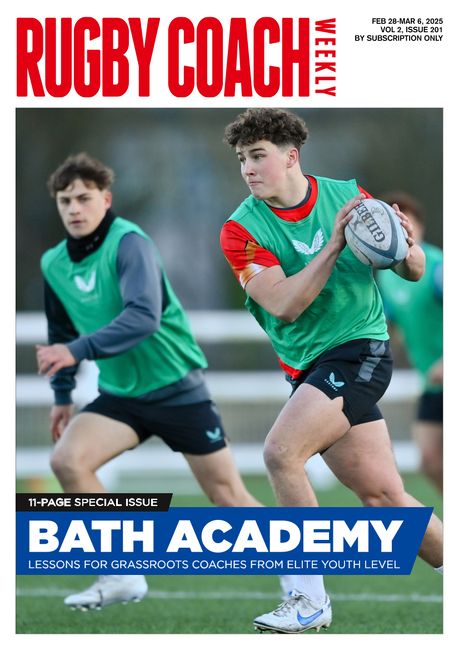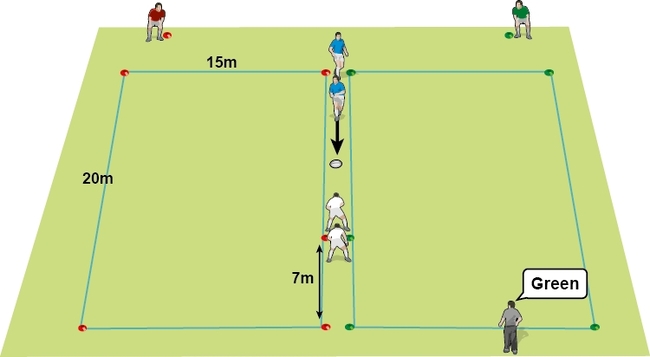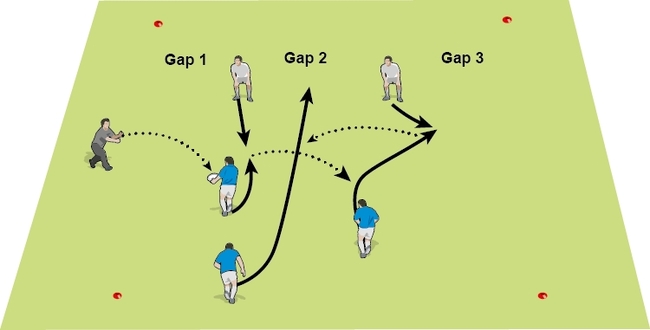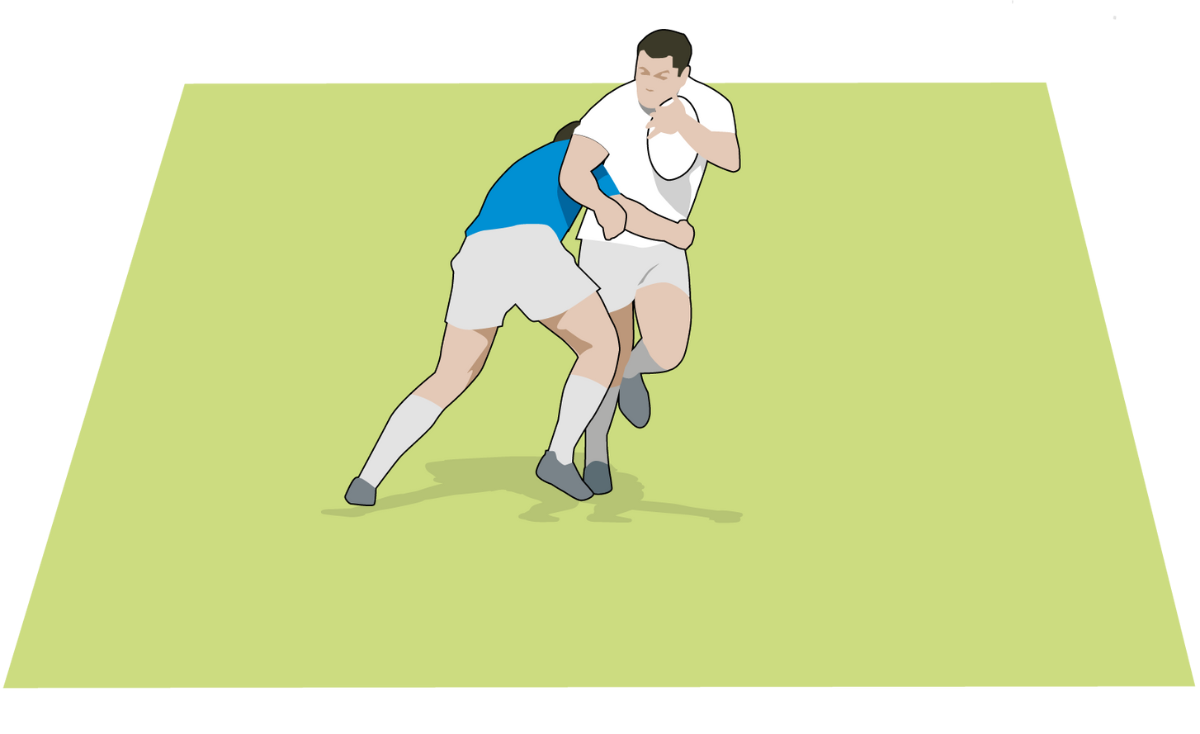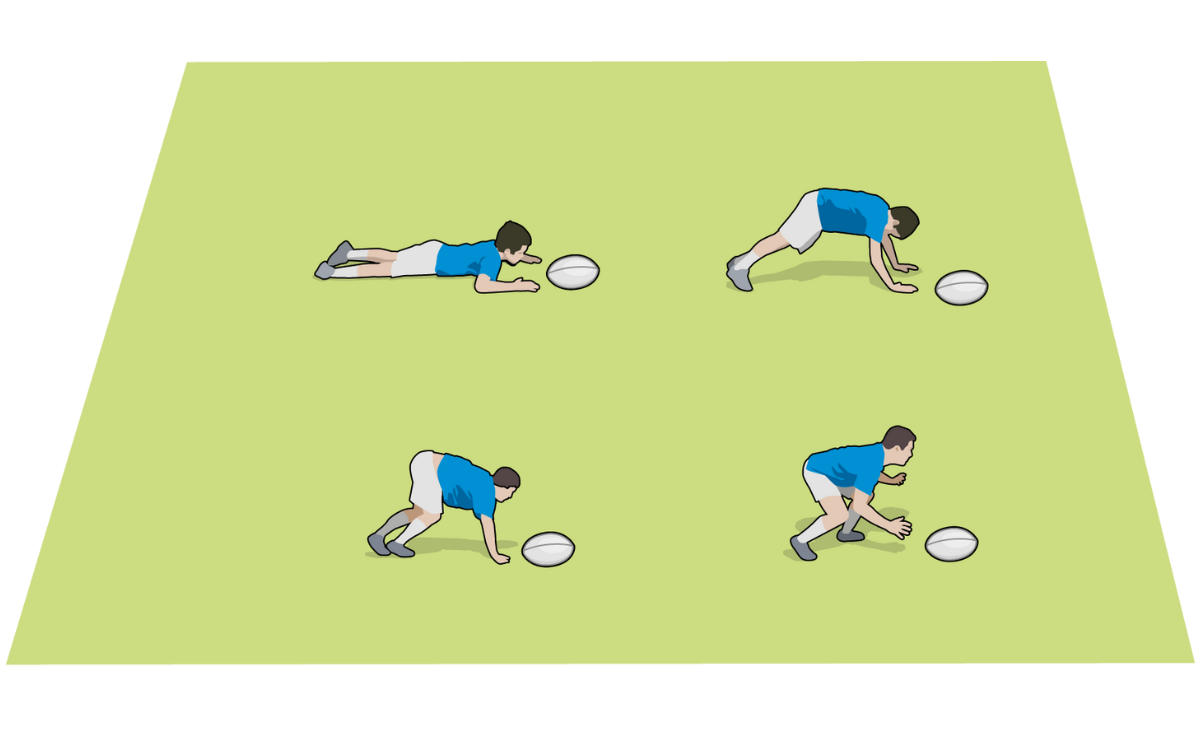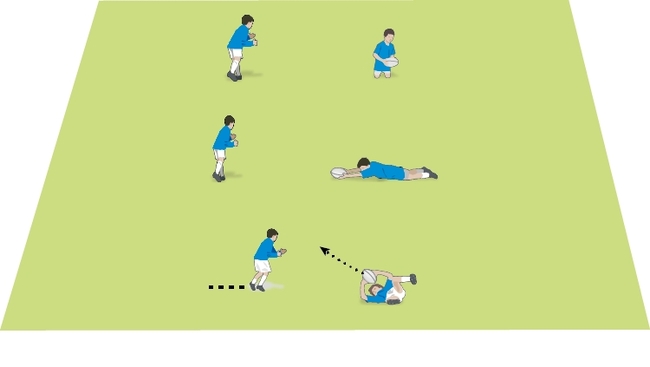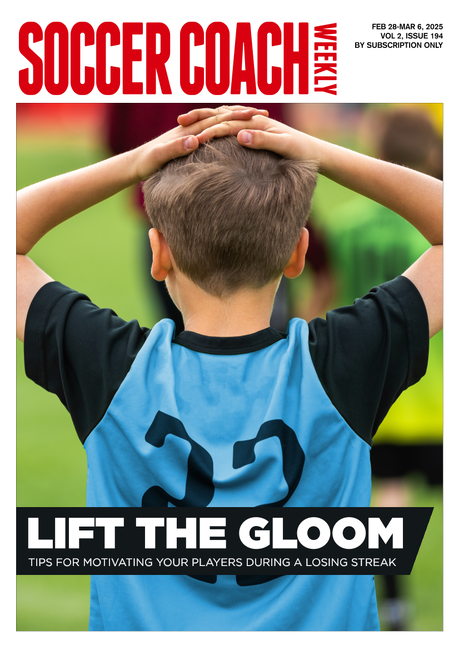Fast passing is better passing

Make your players better handlers by focusing on the speed of pass. This will unlock defences as the ball will always beat the player.
Here’s a well-worn demonstration, but no less effective because of that. Grab hold of a rugby ball. Stand a player about 7m away from you. Put two players next to you. When you say go, these two players race to the player standing away from you. You make the other players “bet” on who’ll win.
Now, say: “I’m going to replace one of the players with something much faster”. Then get one of the fastest players in the squad to stand next to you. Show everyone the ball. They know what’s going to happen now, but demonstrate it anyway. When you shout go, the fastest player sprints off, but soon gives up as the ball flies past them as you pass it to the standing player.
As everyone choruses “The ball will always beat the man”, you can set up races to show whether this is possible.
Put a line of four players with a ball at one end 5m apart. Have a sprinter opposite the ball carrier. When you shout go, the ball has to beat the sprinter to the end of the line. Every player must touch the ball.
It won’t be a foregone conclusion who wins. But the players will know that the ball should win, if the handling is effective enough.
This sort of competition will certainly make the players want to improve their skills. You can experiment with different lengths of line. Shorter lines will favour the sprinter.
This sort of introduction and passing game is a great forerunner to the session Pass quicker, not longer. It works on the premise that quicker passes beat defenders. The other aspect is that longer passes are often easier to defend, especially if they are looped because defenders can cover across quickly.
Some of the speed of passing in the professional rugby in recent weeks has shown that the faster the pass, the harder it is to defend. Not all your players can pass like the top notch number 10s, but encourage them to let the ball beat the man as much as possible.
KEY TECHNIQUES TO LOOK FOR
The catch
We want players to catch the ball off the body. That helps them in lots of ways. It makes them put their hands out, which helps soften the blow of a fast pass. It also keeps the arms and elbows off the body. Therefore, it’s quicker to adjust the ball to pass it on.
Look for fingertip control as the ball arrives.
The pass
Though there are a number of technical aspects to a good and quick pass, you should only concentrate on one for your session.
It doesn’t have to be the most important technique. Each session who look at a different one for players to think about.
Related Files
Newsletter Sign Up
Coaches Testimonials

Gerald Kearney, Downtown Las Vegas Soccer Club

Paul Butler, Florida, USA

Rick Shields, Springboro, USA

Tony Green, Pierrefonds Titans, Quebec, Canada
Subscribe Today
Be a more effective, more successful rugby coach
In a recent survey 89% of subscribers said Rugby Coach Weekly makes them more confident, 91% said Rugby Coach Weekly makes them a more effective coach and 93% said Rugby Coach Weekly makes them more inspired.
Get Weekly Inspiration
All the latest techniques and approaches
Rugby Coach Weekly offers proven and easy to use rugby drills, coaching sessions, practice plans, small-sided games, warm-ups, training tips and advice.
We've been at the cutting edge of rugby coaching since we launched in 2005, creating resources for the grassroots youth coach, following best practice from around the world and insights from the professional game.


